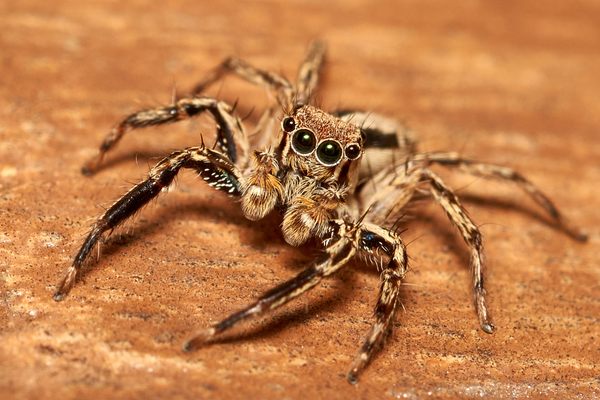Wonder Is Everywhere: Ancient Lampreys, Outdoor Learning, and More From Around the Web
Get a peek into what we’re obsessed with right now.
Wonder is everywhere. That’s why, every other week, Atlas Obscura drags you down some of the rabbit holes we encounter as we search for our unusual stories. We highlight surprising finds, great writing, and inspiring stories from some of our favorite publications.

An 11th-Century Monastery Rediscovers a Hoard of Treasure
by Christy Choi, CNN
Authorities in Nepal estimate that up to 80 percent of the country’s religious artifacts have been stolen since the 1980s, and others lie forgotten in dusty storerooms. Itumbaha, one of the oldest monasteries in Kathmandu, committed itself to finding some of these treasures. Earlier this year, it opened a museum featuring many of the repatriated and rediscovered pieces, including two statues from New York’s Rubin Museum of Art and Metropolitan Museum of Art.
Can Finland’s Forest Schools Make Children Healthier?
by Erika Benke, BBC Future
Samoojat is an old-fashioned Finnish word for those who forage in the forest—and a term related to the newly popular Scandinavian concept of outdoor learning, where children spend most of the day in the forest. As the trend spreads from Finland around the world, scientists are studying the potential health benefits, including stronger immune systems and faster cognitive development.
How a Tiny Pacific Island Became the Global Capital of Cybercrime
by Jacob Judah, MIT Technology Review
In 1997, Tokelau, a string of three islands about 24 hours by boat from Samoa, became the last place in the world to be connected by telephone. Just three years later, that remoteness made the New Zealand territory the perfect target for a European internet entrepreneur who made a deal to manage Tokelau’s internet domain, .tk, and turned it into a haven for spammers and cybercriminals. Can the community recover from this “digital colonialism”?

Earthquake Reveals Giant Aztec Snakehead
by Owen Jarus, LiveScience
When a magnitude-7.6 earthquake hit Mexico City last year, a building at the National Autonomous University of Mexico was among those that suffered significant damage—revealing an enormous stone snakehead. Archaeologists have now unearthed and are studying the colorful sculpture, which is about six feet long and weighs more than a ton.
Giant Prehistoric Lamprey Likely Ate Flesh
by Sarah Kuta, Smithsonian
Paleontologists in northern China have discovered the fossilized remains of two previously unknown species of lamprey. The 160-million-year-old specimens have teeth, leading researchers to hypothesize that the eel-like parasites ate flesh, inspiring new nightmarish descriptions of the creatures already known as “water vampires.” They gouged out flesh from their prey “like living ice cream scoops,” one science writer explains.
Bust Purchased for $6 Poised to Make Millions at Auction
by Daniel Cassady, Art News
In 1728, noted French artist Edmé Bouchardon created a marble bust of a Scottish politician. In 1930, it was purchased at a yard sale for about $6. And by the late 1990s, it was being used as a doorstop in a storage shed in a small town in northern Scotland. Now, the bust is for sale again—the auction price could reach north of $3 million.

Michelangelo’s Secret Room Revealed
by The Florentine
For the first time since its discovery in 1975, a secret room in Florence’s Medici Chapel of the Basilica di San Lorenzo will be regularly open to the public. The walls of the room are covered with charcoal sketches are believed to have been created by Michelangelo in 1530, while he hid in the underground warren for months to escape the wrath of Pope Clement VII.
Aquadom Collapse Remains a Mystery
by Associated Press
Last December, a huge aquarium burst in the lobby of a Berlin hotel, sending a million liters of water and nearly 1,500 fish gushing through the building and into the city streets. Now engineers have closed their investigation into the incident—without finding the cause of the Aquadom collapse. There are no plans to rebuild.












































Follow us on Twitter to get the latest on the world's hidden wonders.
Like us on Facebook to get the latest on the world's hidden wonders.
Follow us on Twitter Like us on Facebook